Scientific Names: Diospyros kaki
Synonym: Embryopteris kaki
English Name: Persimmon
Other Names in English (UK, USA, Canada, South Africa, Australia, New Zealand): Kaki Plum, Kaki, Japanese Persimmon, Chinese Persimmon
Family: Ebenaceae
GENERAL DATA
Plant Parts: Fruit, Root, Bark, Leaves, Flower
Cultivation Mode: Wild Collection/ Cultivated
In Manufacturing: Pharmaceutical, food, confectionery, herbal tea, alcoholic drink, non-alcoholic drink, cosmetics.
🍂 Industries That Use Dried Persimmon Fruit (Diospyros kaki L.)
Dried persimmon, known as Kaki in many cultures, is a traditional delicacy produced from ripe Diospyros kaki fruits. When dried naturally or semi-dried with controlled dehydration, it becomes nutrient-dense, chewy, and naturally sweet—rich in fiber, antioxidants, and minerals.
1. Food & Beverage Industry
Applications:
-
Natural sweet snack or dessert ingredient
-
Added to trail mixes, granola, baked goods
-
Used in energy bars and gourmet chocolates
-
Infused in teas or brewed into traditional fruit beverages
✅ Form: Whole dried fruit, slices, paste, flakes, powders
2. Nutraceutical & Functional Food Industry
Applications:
-
High-fiber snacks for digestive health
-
Rich in tannins and polyphenols for cardiovascular support
-
Source of carotenoids (β-cryptoxanthin), vitamin A, and potassium
-
Low-fat, antioxidant-rich food for weight management
✅ Form: Dried fruit slices, powder, capsules, extract
3. Traditional & Herbal Medicine
Applications:
-
Used in traditional East Asian medicine for sore throats, diarrhea, and high blood pressure
-
Astringent properties help in mild gastrointestinal issues
-
Strengthens the spleen and stomach in TCM practices
✅ Form: Whole dried fruit, decoction slices, syrup, powder
4. Cosmetic & Skincare Industry
Applications:
-
Skin-firming and antioxidant-rich ingredient in facial masks and serums
-
Used in deodorant products due to its antibacterial tannins
-
Applied in natural anti-aging and toning formulations
✅ Form: Persimmon extract, fermented fruit filtrate, powder for masks
5. Confectionery & Gourmet Markets
Applications:
-
High-end artisanal dried fruit in gift boxes
-
Glazed or honey-dipped for luxury dessert use
-
Layered in cakes, puddings, and rice dishes
✅ Form: Whole soft-dried fruits, sugared slices, gourmet packs
6. Export, Ethnic & Organic Markets
Applications:
-
Popular in Korean (Gotgam), Japanese (Hoshigaki), Chinese (Shi bing), and Iranian markets
-
Valued in ethnic wellness and natural food stores
-
Organic and clean-label dried fruit offerings
✅ Form: Ethnic-specific packaging, organic-certified, unsulfured options
🧬 Key Features of Dried Persimmon (Kaki)
| Feature | Description |
|---|---|
| Main Compounds | Fiber, tannins, carotenoids, polyphenols, vitamin C, potassium |
| Taste & Texture | Sweet, honeyed flavor; chewy to soft depending on drying method |
| Shelf Stability | Long-lasting when stored dry and airtight |
| Color | Orange to reddish-brown |
| Cultural Value | Highly symbolic in East Asian and Mediterranean traditions (longevity, purity) |
📌 Summary of Industry Uses
| Industry | Common Uses |
|---|---|
| Food & Beverage | Natural snack, confectionery, tea infusion |
| Nutraceutical | Digestive health, antioxidants, weight control |
| Traditional Herbal | Astringent remedy, sore throat, high blood pressure |
| Cosmetics | Anti-aging, deodorizing, skin toning |
| Gourmet/Ethnic Products | Artisanal delicacies, holiday gifts, cultural foods |
🍃 Industries That Use Persimmon Leaves (Diospyros kaki L.)
Persimmon leaves have long been valued in traditional medicine and are increasingly recognized in modern wellness sectors. Rich in flavonoids, tannins, vitamins (especially vitamin C), and minerals, they are typically harvested in summer, then dried for tea, extracts, or powder.
1. Pharmaceutical & Herbal Medicine Industry
Applications:
-
Antioxidant and anti-inflammatory properties support general wellness
-
Used in herbal formulas to regulate blood pressure and blood sugar
-
Promotes capillary strength and circulation
-
Traditional use for colds, bronchitis, and sore throat
✅ Form: Dried leaves, tea bags, powdered extracts, capsules, tinctures
2. Nutraceutical & Functional Food Industry
Applications:
-
Functional tea for detox and cardiovascular support
-
Included in blood sugar management supplements
-
Rich in vitamin C and polyphenols for immune support
✅ Form: Functional tea blends, drink powders, health capsules
3. Cosmetic & Skincare Industry
Applications:
-
Used in deodorizing and skin-purifying formulas
-
Antioxidant and astringent effects in toners and face masks
-
Natural ingredient in anti-aging, anti-acne, and brightening skin products
✅ Form: Extracts, hydrosols, dried leaf powder
4. Tea & Beverage Industry
Applications:
-
Herbal infusions either solo or in blends (with Mulberry, Lotus leaf, etc.)
-
Naturally caffeine-free with a mild, slightly sweet taste
-
Consumed for wellness, digestion, and metabolic balance
✅ Form: Dried whole or cut leaves, herbal tea bags, RTD bottled drinks
5. Ethnic & Organic Health Product Markets
Applications:
-
Traditional remedy in Korean, Chinese, and Japanese medicine
-
Popular in organic tea shops and Eastern apothecaries
-
Exported as dried loose-leaf or standardized powder
✅ Form: Whole dried leaves, crushed tea leaf, powder, organic-certified versions
🧬 Key Features of Persimmon Leaves
| Feature | Description |
|---|---|
| Main Compounds | Flavonoids (quercetin, kaempferol), vitamin C, tannins, minerals |
| Taste Profile | Mildly sweet, grassy, slightly astringent |
| Color | Deep green (fresh), olive to brownish green (dried) |
| Traditional Use | East Asian medicine for hypertension, inflammation, and immunity |
| Form Options | Tea, extract, powder, capsules, hydrosols |
📌 Summary of Industry Uses
| Industry | Common Uses |
|---|---|
| Herbal & Pharmaceutical | Cardiovascular tonic, anti-inflammatory, immune support |
| Nutraceutical | Antioxidant and blood sugar support supplements |
| Cosmetic & Skincare | Anti-aging, deodorant, purifying skincare ingredients |
| Tea & Beverage | Herbal infusion, detox tea, traditional wellness drinks |
| Organic/Ethnic Markets | Herbal medicine, traditional health teas |
📊 Comparison: Dried Persimmon Fruit vs Persimmon Leaves
| Feature | Dried Persimmon Fruit (Diospyros kaki) | Persimmon Leaves (Diospyros kaki) |
|---|---|---|
| Plant Part Used | Ripe fruit (peeled and sun-dried or air-dried) | Mature leaves, typically harvested in summer |
| Color (dried) | Bright orange to amber brown | Olive green to dull green |
| Taste Profile | Sweet, rich, slightly honey-like | Mild, grassy, slightly astringent |
| Main Compounds | Sugars (glucose, fructose), carotenoids, tannins, fiber | Flavonoids (quercetin, kaempferol), tannins, vitamin C |
| Key Benefits | Nourishing, energizing, supports digestion | Antioxidant, cardiovascular & immune support |
| Traditional Uses | Tonic food, constipation relief, post-illness nutrition | Blood pressure, blood sugar, immune boosting |
| Form in Market | Dried slices, whole fruit, powder | Dried leaves, tea bags, extracts, capsules |
| Used In | Food industry, herbal snacks, traditional medicine | Herbal medicine, nutraceuticals, tea, cosmetics |
| Caffeine Content | None | None |
| Culinary Use | Eaten as a snack, used in desserts or infusions | Brewed into herbal tea, rarely used in food |
| Cosmetic Use | Rare | Extracts used in skincare (deodorizing, toning) |
| Export Grade | Premium dried fruit (whole/sliced) | Organic or conventional dried leaf, cut or powdered |
| Shelf Life (dried) | 6–12 months (sealed, dry conditions) | Up to 18–24 months (cool, dry storage) |
🧬 Summary
-
Dried Persimmon Fruit is primarily a nutritional and culinary product rich in sugars, used as a traditional tonic and sweet snack.
-
Persimmon Leaves are used as an herbal remedy and tea, valued for their flavonoids, vitamin C, and support of cardiovascular and immune health.
PRODUCT NAME IN DIFFERENT LANGUAGES
Persian Name: خرمالو/ Khormalou
German Name (Deutschland, Austria, Switzerland): Kakischeiben, Getrocknete Kaki, Kaki Frucht, Kaki, Sharon Frucht
French Name (France, Belgium, Switzerland, Quebec): Kaki séché, Plaqueminier, Kaki
HARVEST CALENDAR
Feb
Mar
Apr
May
Jun
Jul
Aug
Sep
Oct
Nov
Dec
To order dried Japanese Persimmon, please contact us.
About Diospyros Kaki
It is the fruit of a tree whose height reaches 5 meters.
The leaves of the Diospyros kaki tree are oval, relatively large and sometimes pointed.
The flowers are small and yellow, and each has four petals, the edges of which are slightly curved and the lower part of the petals is square. The sepals of the flowers have four almost heart-shaped leaflets that are attached to each other, and each one is usually curved and bent in the middle.
The fruits grow from the middle of its flowers. These fruits are green at first. But after fully ripening, they turn orange-red. Circular and slightly wide fruits whose flesh is soft and orange and have a relatively thin skin. The taste of these fruits is sweet and slightly astringent. There are kernels in some persimmon species.
Persimmon Chemical Constituents
Gallic acid, Caffeic acid, P-coumaric, Ferulic acid, Chlorogenic acid, Protocatechuic acid, Ellagic acid, Quercetin, Proanthocyanins, catechin, gallocatechin, Kaempferol-3-O-glucoside, 2-Methoxy-1, 4-benzoquinone.
Kaki Temperament
Hot and moist.
Health Benefits of Kaki
The fruit of this tree is tonic for the stomach, and removes chest sputum. Its flower is stomach tonic. The bark and roots of this tree are astringent.
Its fruit helps to cure hiccups. Eating the sap of unripe Persimmon fruit is laxative, it is useful for high blood pressure, bleeding, edema, hemorrhoids, typhus and typhoid.
The decoction of its flower improves nausea, vomiting and cough. Decoction of its sepals is useful for severe cough, shortness of breath and nausea.
Decoction of its leaves helps to treat cough and fever.
Its tree bark is useful for bleeding.
In modern herbal medicine, the juice obtained from the pressure of unripe Persimmon fruit and the sepals of the flower and the pedicel located under the flower are mainly used. This sap is very effective in lowering high blood pressure. It stops bleeding and removes swelling and inflammation of hemorrhoids.
In China, its fruit is used to strengthen the stomach and loosen chest congestion.
Dried Persimmon Fruit – Diospyros kaki L.
General Description
Dried persimmon fruit, derived from the sweet and astringent varieties of Diospyros kaki, is a naturally sweet, chewy, and nutrient-rich dried fruit. It is particularly popular in East Asian and Mediterranean cuisines as both a snack and an ingredient in desserts, teas, and confections. Rich in dietary fiber, minerals, vitamins, and antioxidants such as carotenoids and tannins, dried persimmons support digestive health, cardiovascular wellness, and immune function. Their naturally high sugar content provides a healthy energy boost without refined additives.
Nutritional Composition (per 100 g dried fruit, approximate values)
| Component | Amount |
|---|---|
| Energy | 274 kcal |
| Water | 23.9 g |
| Carbohydrates | 73.4 g |
| – Sugars | 45.6 g |
| – Dietary Fiber | 14.5 g |
| Protein | 1.4 g |
| Total Fat | 0.6 g |
| – Saturated Fat | 0.02 g |
| – Monounsaturated Fat | 0.05 g |
| – Polyunsaturated Fat | 0.12 g |
| Ash (minerals) | 1.5 g |
Mineral & Micronutrient Content
| Mineral | Amount |
|---|---|
| Potassium (K) | 802 mg |
| Calcium (Ca) | 28 mg |
| Magnesium (Mg) | 20 mg |
| Phosphorus (P) | 38 mg |
| Iron (Fe) | 2.5 mg |
| Zinc (Zn) | 0.25 mg |
| Manganese (Mn) | 0.36 mg |
| Copper (Cu) | 0.12 mg |
| Sodium (Na) | 4 mg |
Vitamin Content
| Vitamin | Amount |
|---|---|
| Vitamin A (RAE) | 81 µg |
| Beta-Carotene | 960 µg |
| Vitamin C | 1.2 mg |
| Vitamin E (α-TE) | 0.7 mg |
| Vitamin K | 2.6 µg |
| Vitamin B1 (Thiamine) | 0.05 mg |
| Vitamin B2 (Riboflavin) | 0.04 mg |
| Vitamin B3 (Niacin) | 0.3 mg |
| Vitamin B6 | 0.11 mg |
| Folate (B9) | 7 µg |
Phytochemical Composition
-
Tannins – responsible for astringency and antioxidant activity
-
Carotenoids (β-carotene, lutein, zeaxanthin) – eye health & immune support
-
Polyphenols – anti-inflammatory and cardiovascular benefits
-
Catechins – antimicrobial and metabolic health
-
Gallic acid & ferulic acid – antioxidant properties
Health Benefits
-
Digestive Support – High fiber content promotes bowel regularity and gut health.
-
Heart Health – Potassium helps regulate blood pressure and cardiovascular function.
-
Immune Boost – Carotenoids and vitamin C enhance immune defenses.
-
Eye Protection – Lutein and β-carotene support retinal health.
-
Natural Energy Source – Healthy, slow-release sugars for sustained vitality.
Safety & Usage Notes
-
Naturally high in sugars – diabetic individuals should monitor portion sizes.
-
Astringent varieties must be properly ripened before drying to avoid bitterness from tannins.
-
May cause mild digestive discomfort if consumed in very large quantities.
Storage
-
Store in an airtight container, away from heat, light, and moisture.
-
Shelf life: up to 12 months under optimal dry and cool storage conditions.
Nutrition Facts – Dried Persimmon Leaves (Diospyros kaki L.)
General Description
Dried persimmon leaves come from the Diospyros kaki tree, prized in traditional herbal medicine and tea-making. They are rich in antioxidants, flavonoids, vitamin C, and minerals, offering anti-inflammatory, cardiovascular, and metabolic health benefits. The leaves are caffeine-free, have a mild earthy flavor, and are commonly infused as herbal tea or incorporated into functional health formulations.
Nutritional Composition (per 100 g dried leaves – approximate values)
| Component | Amount |
|---|---|
| Energy | ~250 kcal |
| Carbohydrates | 50–55 g |
| Dietary Fiber | 40–45 g |
| Protein | 9–12 g |
| Total Fat | 3–4 g |
| Saturated Fat | <1 g |
| Ash | 8–10 g |
| Moisture | 5–8% |
Mineral & Micronutrient Content (per 100 g)
| Mineral | Amount |
|---|---|
| Calcium (Ca) | 1,200–1,500 mg |
| Magnesium (Mg) | 250–300 mg |
| Potassium (K) | 1,000–1,200 mg |
| Phosphorus (P) | 150–200 mg |
| Iron (Fe) | 10–12 mg |
| Zinc (Zn) | 1–1.5 mg |
| Manganese (Mn) | 8–10 mg |
| Copper (Cu) | 0.5–0.8 mg |
| Sodium (Na) | <50 mg |
Vitamin Content (per 100 g)
| Vitamin | Amount |
|---|---|
| Vitamin C (Ascorbic Acid) | 150–200 mg |
| Vitamin A (as Beta-Carotene) | 4,000–5,000 IU |
| Vitamin E (Alpha-Tocopherol) | 2–3 mg |
| Vitamin K | 300–350 µg |
| B1 (Thiamine) | 0.1–0.2 mg |
| B2 (Riboflavin) | 0.2–0.3 mg |
| B3 (Niacin) | 2–3 mg |
| B6 (Pyridoxine) | 0.2–0.3 mg |
| Folate (B9) | 40–60 µg |
Phytochemical Composition
-
Flavonoids: Quercetin, kaempferol, myricetin, isoquercitrin
-
Tannins: Catechins, gallic acid derivatives
-
Phenolic acids: Chlorogenic acid, caffeic acid
-
Triterpenoids: Betulinic acid, ursolic acid
-
Other bioactive compounds: Polysaccharides with immunomodulatory effects
Health Benefits
-
Antioxidant protection: High in flavonoids and vitamin C for reducing oxidative stress.
-
Cardiovascular support: Helps regulate blood pressure and improve vascular health.
-
Anti-inflammatory effects: Reduces chronic inflammation markers.
-
Blood sugar regulation: May assist in glucose metabolism and insulin sensitivity.
-
Immune support: Vitamin C and polyphenols boost immune defense.
-
Digestive health: High fiber content aids bowel function and gut microbiota balance.
Safety & Usage Notes
-
Generally safe in moderate amounts (e.g., as tea or extract).
-
Excessive intake may cause mild digestive discomfort in sensitive individuals due to tannins.
-
Pregnant or breastfeeding individuals should consult a healthcare provider before use.
-
Should not replace prescribed treatments for cardiovascular or metabolic disorders.
Storage
-
Store in an airtight container away from direct sunlight, heat, and humidity.
-
Ideal storage temperature: 15–25°C (59–77°F).
-
Shelf life: Up to 24 months under proper storage conditions.
To order Kaki, please contact us.

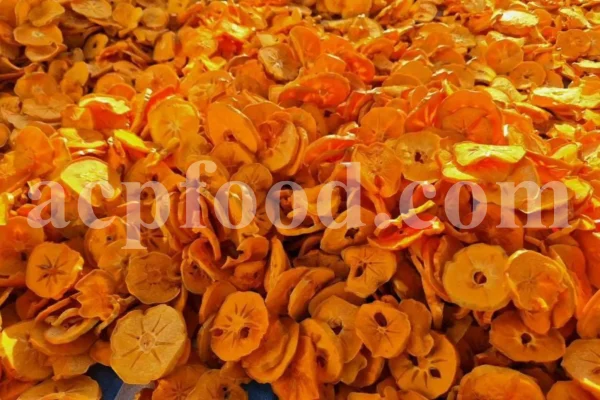
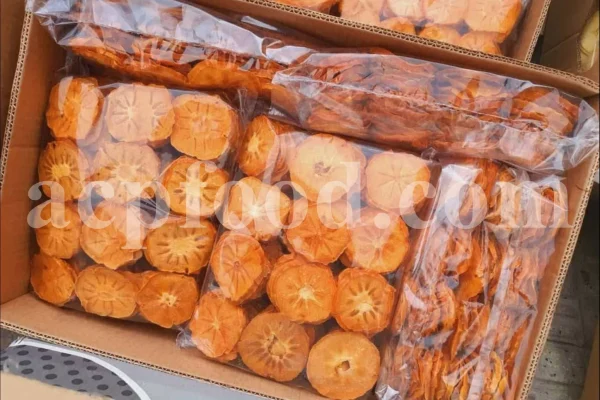
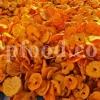

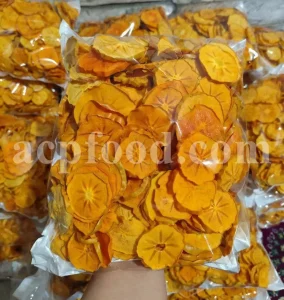
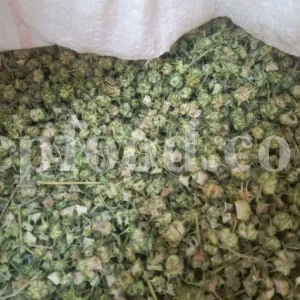
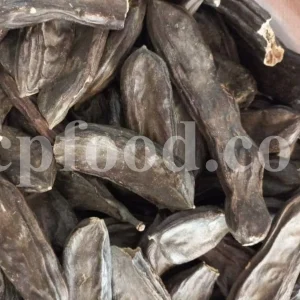
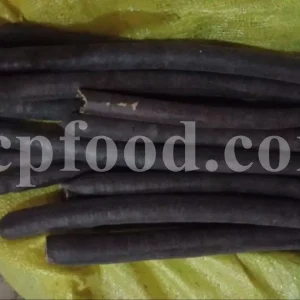
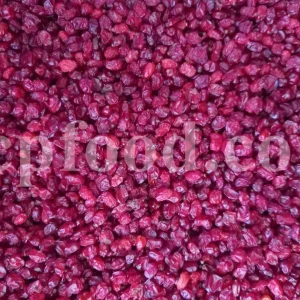
Reviews
There are no reviews yet.